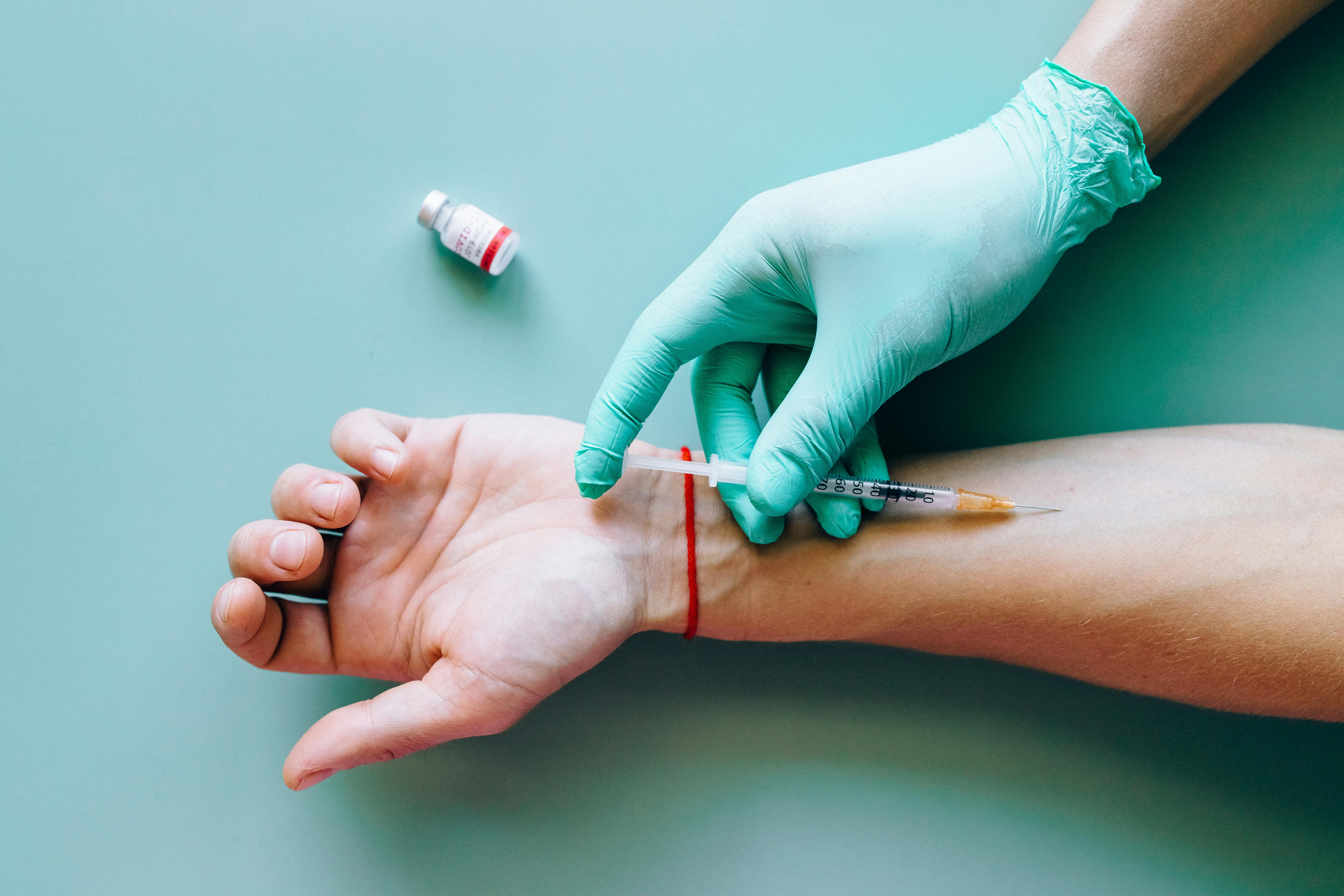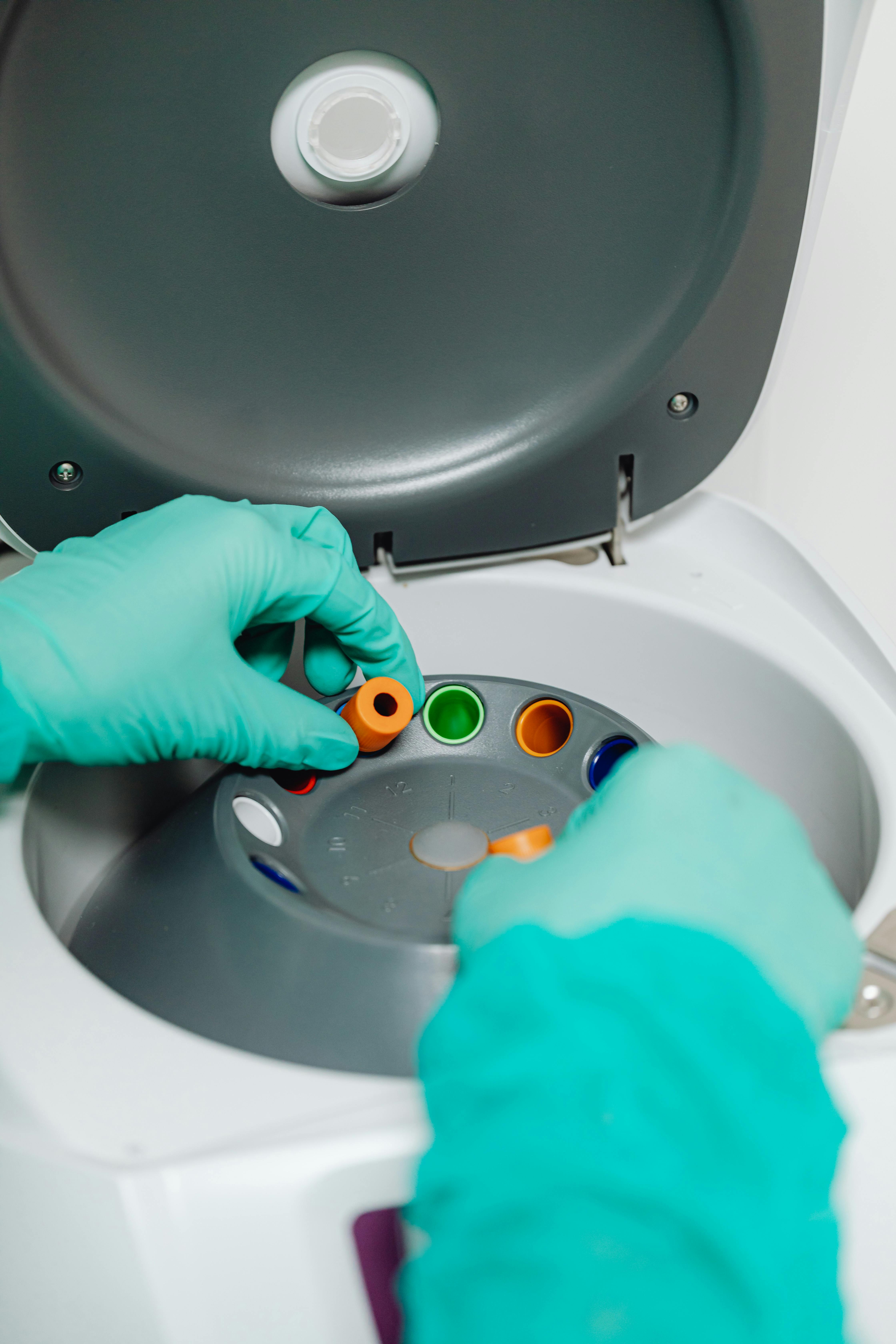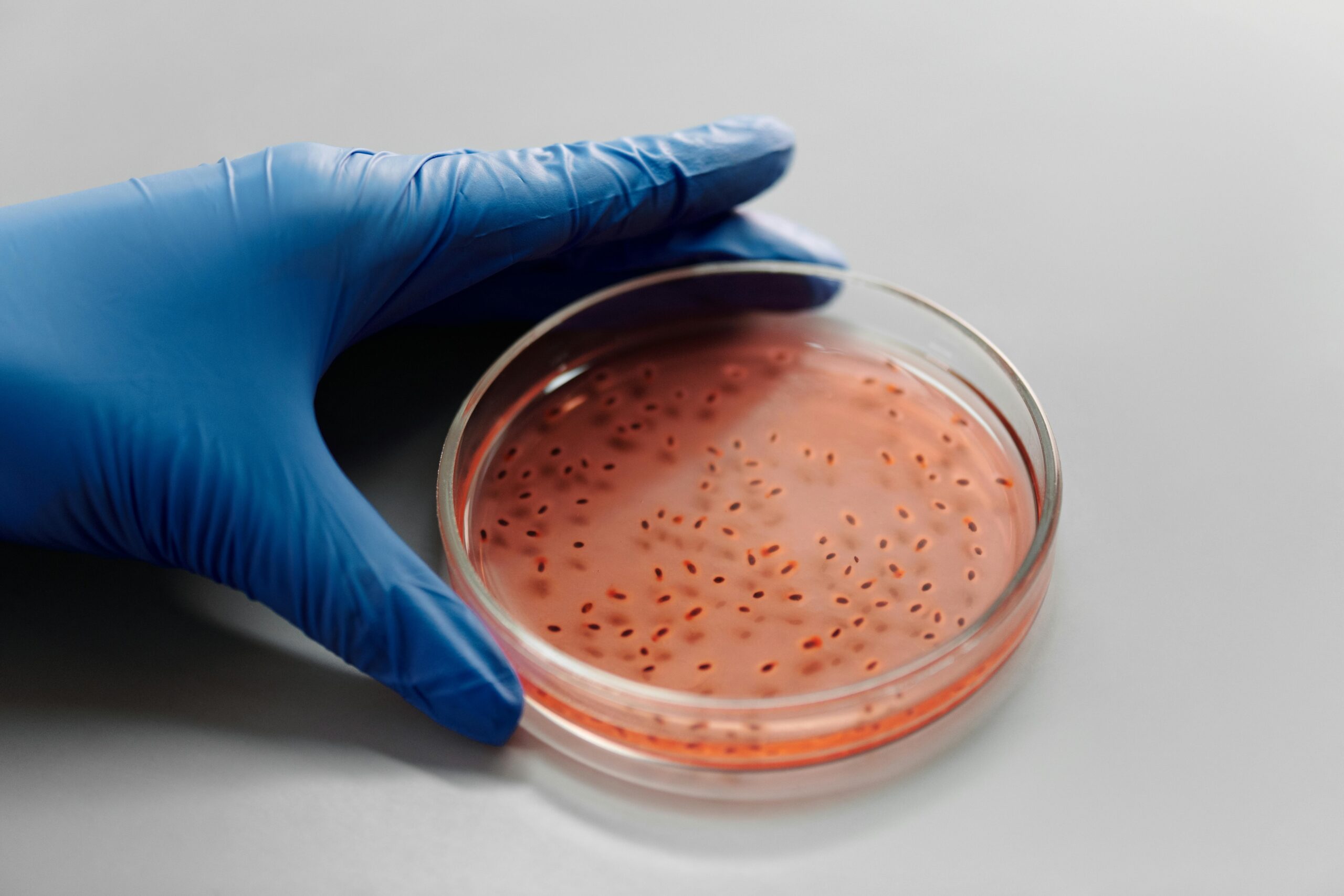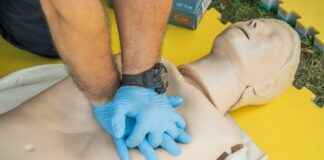Are you curious about what a Clinical Research Associate really does and why this role is becoming one of the most sought-after careers in the healthcare industry? As the demand for innovative medical treatments skyrockets, the need for skilled professionals who can oversee clinical trials and ensure compliance with regulatory standards has never been greater. But what exactly does a Clinical Research Associate do day-to-day, and how can you become one? This exciting career path offers a unique blend of scientific knowledge, project management, and critical thinking skills that can propel your professional journey to new heights. Whether you’re interested in monitoring patient safety, managing data collection, or collaborating with pharmaceutical companies, understanding the ins and outs of clinical research monitoring is essential. Many aspiring associates wonder, “How do I get certified as a Clinical Research Associate?” or “What are the latest trends in clinical trial management?” In this post, we’ll dive into powerful insights on clinical research associate jobs, salary expectations, and the essential qualifications needed to succeed in this competitive field. Ready to unlock the secrets behind successful clinical trials and the vital role CRAs play? Let’s explore the fascinating world of clinical research together!
Top 10 Clinical Research Associate Secrets Every Aspiring CRA Must Know

Clinical Research Associate: The Unsung Hero of Medical Trials
Alright, so you probably heard of doctors and nurses, but have you ever wonder who actually keeps the whole clinical trial machine running smoothly? Yup, that’s where the clinical research associate (CRA) steps in. They are like the behind-the-scenes ninja, juggling between sites, data, and all those pesky protocols. Not really sure why this matters, but these folks are kind of the backbone for getting new drugs and treatments approved. Without them, we’d probably still be stuck with the same old meds from decades ago.
What Does a Clinical Research Associate Actually Do?
If you think a CRA just sits around reading papers all day, you’re way off. These professionals are responsible for monitoring clinical trials, making sure everything abides by the guidelines, and ensuring patient safety. They visit clinical sites regularly, check data accuracy, and sometimes even train site staff. Kind of like the referees in a sports game, but with less whistle blowing and more paperwork.
| Task | Description | Frequency |
|---|---|---|
| Site Monitoring | Checking the trial site’s compliance and data | Weekly or bi-weekly |
| Data Verification | Ensuring data matches source documents | Ongoing |
| Training Site Staff | Educating about protocol and regulations | As needed |
| Reporting | Writing monitoring reports and findings | After each visit |
The clinical research associate job description is pretty vast. Sometimes, they even have to troubleshoot issues on the spot. Imagine finding out a site lost some critical data — CRA’s gotta handle that mess, pronto.
Skills and Qualifications You’ll Need (or Maybe Not?)
Usually, you’d expect a CRA to have a degree in life sciences or pharmacy, but honestly, some companies are more chill about it. They mostly want someone detail-oriented with good communication skills. Maybe it’s just me, but I feel like patience is the real MVP here. You’re dealing with doctors, patients, and a mountain of regulations — not a walk in the park.
Below is a quick rundown of the typical qualifications and skills:
- Bachelor’s degree in a related field (biology, nursing, pharmacy)
- Understanding of clinical research associate responsibilities
- Good knowledge of regulatory guidelines (FDA, ICH-GCP)
- Excellent organizational and communication skills
- Ability to travel frequently (because yeah, sites aren’t always next door)
- Problem-solving attitude and flexibility
Travel is a big part of the CRA life. You might spend days or weeks away from home, hopping between cities or even countries. Not all people are cut out for that — but hey, it adds some spice to the job.
Why Are Clinical Research Associates Important?
This might sound like a broken record, but CRAs are crucial because they make sure clinical trials are conducted ethically and correctly. Without them, we could end up with unreliable data or worse, patient harm. They enforce compliance with clinical research associate protocols, making sure the trial sticks to the plan that was approved by regulatory authorities.
Here’s a quick list of why their role is vital:
- Ensuring patient safety and rights are protected
- Maintaining data integrity for reliable trial results
- Helping sponsors meet regulatory requirements
- Facilitating communication between sponsors and clinical sites
- Preventing costly trial delays by addressing issues early
The tricky part? Sometimes, CRAs have to deal with sites that don’t follow procedures properly. They have to be firm but diplomatic — like a parent disciplining a rebellious teenager, if that makes any sense.
Common Challenges Faced by Clinical Research Associates
No job is perfect, and being a CRA comes with its own set of headaches. For starters, managing multiple sites can get overwhelming. Each site has its own quirks, staff, and problems. Keeping track of all this while ensuring compliance is like spinning plates in a circus.
Another pain point is the ever-changing regulatory landscape. Just when you think you’ve mastered one set of rules, bam, new guidelines come up. It keeps you on your toes, but also can be frustrating.
| Challenge | Description | Impact |
|---|---|---|
| Site Non-compliance | Sites not following protocols or missing data | Trial delays, data issues |
| Travel Fatigue | Constant travel can cause burnout | Reduced efficiency |
| Regulatory Changes | New rules and updates to compliance requirements | Requires continuous learning |
| Communication Barriers | Misunderstandings with site staff or sponsors | Project delays |
Honestly, sometimes you wonder if the paperwork will ever end. If you’re someone who loves a desk job with zero surprises, this might not be your cup of tea.
A Day in the Life of a Clinical Research Associate
Picture this: you wake up early (because flights wait for no one), grab a coffee that tastes like
How to Unlock Rapid Career Growth as a Clinical Research Associate in 2024

Clinical Research Associate: What They Really Do, Or So They Say
So, you wanna know about a clinical research associate job description? Well, buckle up, because this ain’t your typical 9 to 5 gig. A Clinical Research Associate (CRA) is kinda like the detective of the medical world, tracking and monitoring clinical trials so drugs and treatments get the thumbs up from the powers that be — the regulatory bodies. Not really sure why this matters, but these folks are supposed to make sure everything is on the up-and-up during a clinical trial. Sounds fancy, right? But let me tell you, it ain’t always sunshine and rainbows.
What is a Clinical Research Associate, Anyway?
Basically, a CRA is the bridge between the pharmaceutical companies, the clinical trial sites, and the regulatory agencies. They monitor the clinical research activities to ensure that the study is following the protocol. And when I say “protocol,” I mean a bunch of rules and guidelines that the study must follow — like a recipe, but for science. They check data, verify informed consent forms, and make sure patient safety is not getting tossed out the window.
Table 1: Key Responsibilities of a Clinical Research Associate
| Task | Description | Frequency |
|---|---|---|
| Site Monitoring Visits | Visit clinical sites to check trial progress | Weekly/Monthly |
| Data Verification | Cross-check data entered against source documents | Ongoing |
| Regulatory Compliance Checks | Ensure adherence to regulatory standards | As Required |
| Training Site Staff | Educate clinical site staff about protocols | Occasionally |
| Reporting | Prepare monitoring visit reports | After Visits |
Honestly, sometimes it feels like CRAs are just paperwork ninjas. Their reports can fill whole binders, and one missed signature can cause a whole mess of trouble. Maybe it’s just me, but I feel like they spend more time with pens and clipboards than with actual people.
How to Become a Clinical Research Associate?
This is where the fun begins. There isn’t a one-size-fits-all path, but typically, you’ll need a degree in life sciences, pharmacy, nursing, or something along those lines. Then, you gotta get some hands-on experience, maybe as a clinical trial assistant or a data coordinator. And don’t forget the certifications like the ACRP (Association of Clinical Research Professionals) or SOCRA (Society of Clinical Research Associates) which arent really mandatory but can boost your cred big time.
List: Steps to Become a Clinical Research Associate
- Earn a bachelor’s degree in relevant field (biology, pharmacy, nursing).
- Gain experience in clinical trials or healthcare settings.
- Obtain certifications (optional but recommended).
- Apply for CRA positions.
- Continue education and training to stay updated.
Honestly, the job market for clinical research associate jobs near me is kinda competitive, but with the right mix of skills and some luck, you can nail it.
Daily Life of a Clinical Research Associate
What does a CRA do on a typical day? Well, they wake up, grab a coffee (or five), and maybe hit the clinic site to review study progress. They check patient records, verify data accuracy, and maybe even have a chat with the site staff. But a large chunk of their day is buried under piles of documents and reports. Sometimes you wonder if they’re clinical researchers or professional paper-pushers.
Sheet: Sample Daily Schedule of a CRA
| Time | Activity |
|---|---|
| 8:00 am | Check emails and review monitoring plan |
| 9:30 am | Site visit and patient record verification |
| 12:00 pm | Lunch (because even CRAs need fuel) |
| 1:00 pm | Data entry and report writing |
| 3:00 pm | Teleconference with clinical trial team |
| 5:00 pm | Wrap up and plan for next day |
Sometimes, the job requires travel – lots of it. If you don’t like airports or hotel life, better think twice before jumping into this career. But hey, it beats sitting in a cubicle all day, right?
Challenges Faced by Clinical Research Associates
You’d think it’s all just checking boxes and collecting signatures, but nope. CRAs often face the headache of dealing with non-compliant sites, delayed data submissions, and sometimes, downright uncooperative staff. And don’t get me started on the regulatory maze – it’s like trying to solve a Rubik’s cube blindfolded.
Some common challenges include:
- Keeping up with ever-changing regulations.
- Managing multiple sites simultaneously.
- Handling last-minute protocol amendments.
- Ensuring patient safety under tight deadlines.
Maybe it’s just me, but I feel like the poor CRA’s job is to be
The Ultimate Guide to Becoming a Successful Clinical Research Associate Today

Clinical Research Associate: What They Do and Why It’s Actually More Complicated Than You Think
So, you’ve heard about this job called a clinical research associate, huh? Maybe you stumbled upon it while googling jobs in healthcare or pharma, or you are just curious how those clinical trials get done without turning into a total mess. Not really sure why this matters, but the role of a clinical research associate (CRA) is pretty crucial in the big scheme of medical research. They are like the middlemen (or women) who make sure that the clinical trials — those tests on new drugs or treatments — don’t go off the rails.
What is a Clinical Research Associate?
A clinical research associate job description usually goes like this: they monitor clinical trials, ensure compliance with protocols, verify data accuracy, and basically keep everyone honest. But that’s not all, they also handle a ton paperwork, interact with doctors, patients, and regulatory bodies. Sometimes, they even have to travel to trial sites — because not all research happens in fancy labs.
| Key Responsibilities of a Clinical Research Associate | Notes |
|---|---|
| Monitoring clinical trial sites | Ensures protocol adherence and safety |
| Verifying data and source documents | Data accuracy is a must, or else… |
| Reporting adverse events | Must be timely and accurate |
| Liaison between sponsor and site | Smooth communication is key |
| Regulatory compliance checks | Keeping everything legal and ethical |
Maybe it’s just me, but I feel like this job requires the patience of a saint. Imagine having to check every single detail, all the paperwork, and still being ready to jump on a plane to some random hospital in the middle of nowhere. Yeah, fun times.
Skills You Need (or Should Have)
If you think being a clinical research associate is all about wearing a white coat and looking serious, think again. It demands a mix of technical know-how, people skills, and organizational wizardry. Here’s a quick list of what you probably need:
- Good understanding of clinical trial processes (duh)
- Attention to details (because missing one thing can mess up the whole study)
- Communication skills (to deal with doctors, patients, sponsors)
- Ability to work independently (sometimes you’re the only one on site)
- Basic knowledge of regulatory guidelines like ICH-GCP (International Council for Harmonisation – Good Clinical Practice)
- Data management skills (Excel sheets, databases, whatever they use)
How to Become a Clinical Research Associate
Now, if you’re wondering how to become a clinical research associate with no experience, it’s not exactly a walk in the park. Most CRAs start with a bachelor’s degree in life sciences, nursing, pharmacy, or similar fields. Some go for certifications like ACRP or SOCRA, which help a lot. Internships or entry-level clinical trial assistant roles can open doors too.
| Education/Certifications | Importance Level | Notes |
|---|---|---|
| Bachelor’s degree (Life Sciences) | High | Basic requirement |
| Clinical Research Certification | Medium | Boosts credibility and knowledge |
| Experience as Clinical Trial Assistant | High | Hands-on experience is gold |
| Good Clinical Practice (GCP) Training | High | Regulatory knowledge is essential |
Don’t get me wrong, some folks jump straight into CRA roles without all these, but they probably have a lot of hustle and charm. Or maybe just luck.
Challenges Faced by Clinical Research Associates
It’s not all sunshine and rainbows in the life of a CRA. They face challenges like:
- Keeping up with ever-changing regulations (because laws love to change)
- Managing multiple sites at once (juggling act, anyone?)
- Dealing with uncooperative site staff (people can be difficult)
- Tight deadlines for data submission (pressure cooker mode)
- Travel fatigue (airport lounges are their second home)
Honestly, I sometimes wonder if CRAs get enough credit for what they do. They’re the unsung heroes keeping clinical trials legit and safe.
Tools and Technologies Used by Clinical Research Associates
Yes, the job is not just about paperwork and phone calls. There are tech tools that CRAs use to make life easier (or more complicated, depending on your perspective):
| Tool/Software | Purpose | Common Usage |
|---|---|---|
| Electronic Data Capture (EDC) Systems | Collect and manage trial data | Reduces errors, speeds up data entry |
| Clinical Trial Management System (CTMS) | Track trial progress and documentation | Helps manage timelines and resources |
| Remote Monitoring Tools | Monitor trial sites virtually | Useful especially post-pandemic |
| Microsoft Excel and Access | Data analysis and reporting |
Insider Tips: Clinical Research Associate Career Advancement Strategies That Work

Clinical Research Associate: The Unsung Heroes of Medical Trials
So, you wanna know what a clinical research associate job description really looks like? Well, buckel up, because it’s not all lab coats and fancy jargon. These folks are the backbone of medical trials, making sure everything runs smooth — or at least tries to. If you think clinical trials just happen magically, nah, there’s a CRA (that’s short for clinical research associate) making sure site visits, patient data, and regulatory stuff get done right. Or at least attempted to be done right, sometimes.
What Does a Clinical Research Associate Actually Do?
Honestly, a CRA is like a jack-of-all-trades but in the clinical research world. Their main gig? Monitoring clinical trials, which means they visit trial sites, check data quality, and ensure the trial is following protocol. They keep an eagle eye on patient safety, compliance, and data integrity.
| Key Responsibilities | Details |
|---|---|
| Site Monitoring | Conduct regular visits to clinical trial sites |
| Data Verification | Cross-check patient data against source documents |
| Regulatory Compliance | Ensure trials follow guidelines (FDA, EMA, etc) |
| Communication | Liaison between sponsors, sites, and vendors |
| Problem-Solving | Address issues during the clinical trial process |
Now, maybe it’s just me, but I feel like these tasks sound simple on paper — but they involve juggling a million things at once. Like you suddenly find yourself explaining to a nurse why she can’t use that one blood pressure cuff because it’s not calibrated per protocol. Trust me, not the easiest conversation.
Skills Needed For Clinical Research Associate
Here’s where it gets interesting. You don’t just need a science degree to be a CRA, but you do need to be a bit of a multitasker, with eagle-sharp attention to details. Also, sometimes you’ll have to deal with regulatory documents so thick and boring they could put a caffeinated person to sleep.
- Strong communication skills: You gotta be able to talk to doctors, patients, and sponsors without sounding like a robot.
- Detail-oriented: One missed comma in a protocol can mess up the whole trial. No kidding.
- Organizational skills: Managing multiple sites and timelines is no walk in the park.
- Problem-solving: Unexpected issues? Yep, you’ll see those a lot.
- Clinical knowledge: Understanding medical terminology and trial phases helps a lot, even if you’re not a doctor.
Clinical Research Associate Salary and Career Path
Money talk time — because honestly, we all wanna know if this job pays the bills. The average clinical research associate salary can vary depending on experience, location, and company. Entry-level CRAs might start at $50,000-ish, but with years of experience, you could be looking at $90,000 or more. Not bad, right?
| Experience Level | Average Salary (USD) |
|---|---|
| Entry-Level CRA | $50,000 – $60,000 |
| Mid-Level CRA | $65,000 – $80,000 |
| Senior CRA / Manager | $85,000 – $100,000+ |
Career progression often leads to roles like Clinical Project Manager or even positions in regulatory affairs. Or maybe you just stay a CRA forever because you love the chaos — no judgment.
How To Become a Clinical Research Associate?
If you’re thinking about diving into this field, there’s a typical path, but of course, nothing is set in stone. Usually, you need:
- A bachelor’s degree in life sciences, nursing, pharmacy, or related field.
- Some experience in clinical trials, maybe as a clinical trial coordinator or in data management.
- Certifications like ACRP Certified Clinical Research Associate (CCRA) or SOCRA Certified Clinical Research Professional can boost your resume.
- Strong knowledge of GCP (Good Clinical Practice) and regulatory guidelines.
Not really sure why this matters, but sometimes companies care more about your experience than your degree. Go figure.
Challenges Faced by Clinical Research Associates
Being a CRA is not all sunshine and rainbows. Long hours, frequent travel, and dealing with site staff who sometimes don’t follow protocol can be frustrating. Also, the pressure to keep patient safety and data quality intact while juggling deadlines? Yeah, no easy task.
| Common Challenges | Possible Solutions |
|---|---|
| Frequent travel fatigue | Plan travel in advance, use tech for remote monitoring |
| Protocol deviations by sites | Conduct thorough training and frequent communication |
| Data discrepancies | Implement double-checks and audits |
| Regulatory changes | Continuous education and training |
Sometimes you feel like a detective, trying to find out where
What Are the Most In-Demand Skills for Clinical Research Associates in 2024?

Clinical Research Associate: What They Do and Why You Probably Should Care
If you ain’t heard about a clinical research associate before, you’re not alone. These folks, often called CRAs, are the unsung heroes of the medical research world—or at least, that’s what they tell me. Not really sure why this matters, but CRAs basically keep a close eye on clinical trials to make sure everything runs smooth and according to plan. Imagine being the referee at a super important soccer game, but instead of whistle and yellow cards, they got protocols and patient data.
What is a Clinical Research Associate?
Alright, so a clinical research associate job description is pretty broad. They monitor clinical trial sites, make sure that the research is done right, and that the trial follows all the regulatory mambo jumbo. Sometimes, they travel a lot—like, a LOT—and visit hospitals or clinics participating in the trial. If you thinking this is easy, nah—there’s paperwork, audits, and reports that needs to be done just right.
Here’s a quick table to break down their responsibilities:
| Task | Description | Frequency |
|---|---|---|
| Site Monitoring | Visit trial sites to check compliance and data | Weekly/Monthly |
| Data Verification | Cross-check patient data with source documents | Ongoing |
| Regulatory Compliance | Ensure trials are following local & international laws | Continuous |
| Training Site Staff | Teach the site staff about protocol updates | As needed |
| Reporting | Generate monitoring visit reports | After each visit |
See, that’s a lot on their plate. And sometimes, the rules change mid-trial, which makes their job a bit like juggling flaming torches.
Why Clinical Research Associates Are Important
Maybe it’s just me, but I feel like people don’t really appreciate how much CRAs do. They are the bridge between the drug companies and the hospitals, making sure that the study data is good enough to get new medicines approved. Without this, you might be taking meds that haven’t been properly tested—or worse, no new meds at all!
Some long tail keywords you might wanna keep in mind: clinical research associate responsibilities and duties, clinical research associate monitoring visit report, and clinical research associate job role in clinical trials. These are the bread and butter phrases that search engines love.
How to Become a Clinical Research Associate
Ok, so you want to become a CRA? Well, it ain’t just about having a fancy degree. You usually need a background in life sciences—like biology, pharmacy, or medicine—but sometimes, someone with nursing or even engineering background sneaks in. Most CRAs get some on-the-job training too because, let’s be honest, you learn a lot by doing.
Here’s a rough path:
- Earn a bachelor’s degree (preferably in science or health)
- Gain some experience in clinical research or healthcare
- Get certified by a recognized body (like ACRP or SOCRA)
- Start as a CRA associate or junior CRA
- Work your way up by gaining experience and specialized knowledge
Honestly, this career path can be a roller coaster—one day you’re analyzing data, the next you’re dealing with a cranky site coordinator. So, flexibility is a must.
Challenges CRAs Face Daily
Clinical trials are like a big messy puzzle, and CRAs are trying to put all the pieces together while the clock is ticking. Sometimes sites don’t follow protocols, data gets messed up, or regulatory bodies throw curveballs. Plus, the travel schedule can kill your social life—which might be ok if you’re a workaholic, or a nightmare if you like weekends.
Here’s a quick list of common challenges:
- Protocol deviations and non-compliance
- Data discrepancies and missing info
- Tight deadlines and heavy paperwork
- Traveling fatigue and site coordination
- Regulatory audits and inspections
Some days you feel like a detective, other days just a glorified data entry clerk. But hey, at least you’re contributing to science, right?
Tools of the Trade for Clinical Research Associates
Technology nowadays makes CRA’s job a bit easier. Electronic Data Capture (EDC) systems, Clinical Trial Management Systems (CTMS), and remote monitoring tools are just some of the gadgets and software they use. Not gonna lie, some CRAs still prefer paper forms (old school vibes) but the industry is pushing digital hard.
Check out this quick comparison sheet for common tools:
| Tool Name | Purpose | Pros | Cons |
|---|---|---|---|
| EDC Systems | Collecting patient data electronically | Faster data entry, fewer errors | Learning curve |
| CTMS | Manage and track clinical trials | Centralized info, better oversight | Expensive, complex |
| Remote Monitoring |
Clinical Research Associate Job Secrets: How to Land Your Dream CRA Position

Clinical Research Associate: What’s The Deal With This Job Anyway?
Alright, so you probably heard about a clinical research associate job description a million times, but what does it really means? Honestly, it’s not just some fancy title thrown around in pharma companies; it’s actually a pretty crucial role in the whole clinical trial circus. A clinical research associate career path usually involves a lot of traveling, paperwork (ugh, the worst!), and making sure the clinical trials run smoothlier than a buttered-up pan.
What Does a Clinical Research Associate Actually Do?
So, picture this: a clinical research associate job responsibilities list that looks kinda never ending. You got to monitor clinical trial sites, ensure protocols is followed (or else the FDA comes knocking), and verify the data collected is legit. Not really sure why this matters, but apparently, if the data is messed up, the whole drug approval process can go belly up. Oh, and they also train the site staff, which sounds a bit like babysitting but with more paperwork and less fun.
Here’s a quick rundown of key tasks a CRA handles:
| Task | Description | Importance Level (1-10) |
|---|---|---|
| Site Monitoring | Visit clinical trial sites to check compliance | 10 |
| Data Verification | Ensure data matches source documents | 9 |
| Patient Safety Oversight | Watch out for any adverse events | 8 |
| Regulatory Documentation | Maintain all regulatory documents updated | 7 |
| Communication With Teams | Coordinate between sponsor and site staff | 8 |
If you think this sounds like a desk job, oh boy, you’re wrong. A clinical research associate remote jobs might exist, but most CRAs are constantly on the move. Airports and hotels are basically their second home.
Skills and Qualifications Needed (Or You’re Doomed)
Maybe it’s just me, but I feel like the list of “required skills for clinical research associate” is a bit intimidating. You got to know about GCP (Good Clinical Practice), regulatory guidelines, medical terminology, and have a sharp eye for detail. Not to mention, you must be able to juggle multiple tasks without losing your mind. In simpler words: if you’re a scatterbrain, better run.
Below is a checklist to see if you have what it takes:
- Bachelor’s degree in life sciences, nursing, or related field (Some employers want a Master’s, because why not?)
- Experience in clinical trial monitoring (or at least a good story about it)
- Excellent communication and interpersonal skills (because you’ll deal with all sorts of people)
- Attention to detail that borders on obsession
- Ability to travel frequently (pack your bags, literally)
The Pay and Growth: Is It Worth It?
Let’s talk turkey. The clinical research associate salary range varies widely depending on where you work, but on average, it’s not too shabby. Entry-level CRAs might start with a modest paycheck, but once you gain experience, those zeros on your paycheck tend to multiply. It’s not exactly CEO money, but hey, it pays the bills and then some.
If climbing the corporate ladder is your thing, there’s a clinical research associate career growth opportunities that include positions like Senior CRA, Project Manager, or even moving into clinical operations management. Though, fair warning, the hours can get long and sometimes you feel like a glorified data police.
A Day in the Life of a Clinical Research Associate
Ever wondered what an average day looks like? Well, here’s a rough sketch (note: it’s not always this neat):
| Time | Activity |
|---|---|
| 7:00 AM | Wake up, check emails from clinical sites |
| 9:00 AM | Travel to clinical trial site (or virtual meeting) |
| 11:00 AM | Conduct site monitoring visit |
| 2:00 PM | Review patient data and source documents |
| 4:00 PM | Update monitoring reports and communicate findings |
| 6:00 PM | Plan next day’s site visits and tasks |
Sounds exhausting? It kinda is. But some people thrive on the adrenaline of tight deadlines and ensuring new medicines get to patients faster.
Why You Should Care About Clinical Research Associates
Honestly, without these folks, many drugs you take would never see the light of day. They are like the unsung heroes of the pharma world, making sure everything is on the up and up. So if you ever wonder “what is a clinical research associate?”, just think of them as the watchdogs of clinical trials.
Here’s some clinical research associate job outlook and demand info:
- The healthcare industry is growing, which means more clinical trials (yay, science!)
- Increasing regulations require
Step-by-Step Career Path for Clinical Research Associates: From Entry-Level to Expert

Clinical Research Associate: What They Actually Do (Or Supposed To Do)
If you ever wonder what a clinical research associate job description looks like, then you are in the right place. Not really sure why this matters, but people keep asking me about this role like it’s some kind of magic science wizard. Spoiler alert: it’s not that magical, but still very important. A clinical research associate (CRA) is basically the middleman, or middleperson, between the clinical trial sites and the sponsors. They monitor the trials, ensure protocols are followed, and try to keep the whole process running smoothly. Sounds simple, right? Well, it’s not always that straightforward.
What Is a Clinical Research Associate?
A clinical research associate responsibilities mostly revolve around overseeing the progress of clinical trials, but thats just scratching the surface. They visit trial sites regularly to verify that the data collected is accurate and that the trial protocols is being followed (yes, protocolS — not protocol). They also make sure the safety and rights of the patients participating in the trials are protected. If something goes wrong, the CRA is usually the first person to find out and try to fix it.
| Key Responsibility | Description |
|---|---|
| Site Monitoring | Regular visits to check compliance and data |
| Data Verification | Ensuring data accuracy and consistency |
| Regulatory Compliance | Making sure trials follow laws and guidelines |
| Patient Safety Oversight | Protecting patient rights and wellbeing |
| Documentation & Reporting | Keeping records and reporting to sponsors |
Why Should You Care About Clinical Research Associate Salary?
Okay, maybe it’s just me, but I feel like salary is always the elephant in the room. If you’re thinking about becoming a CRA, or just curious, then you might wanna know how much these folks make. According to various sources, the clinical research associate salary range varies widely depending on experience, location, and the type of company they work for. Entry level CRAs might start off making somewhere around $50,000 to $60,000 a year, while seasoned pros can rake in upwards of $90,000 or more. Not bad for a job that involves a lot of traveling and paperwork, huh?
Skills You Need (But Not Always Told)
Here’s a not-so-secret list of skills that a CRA should have. Honestly, some of these are obvious, but others might surprise you:
- Attention to detail (because one tiny mistake can mess up the whole trial)
- Good communication (you gotta talk to doctors, patients, sponsors – it’s a people job)
- Organizational skills (juggling multiple sites and deadlines is a real challenge)
- Problem-solving (things never go 100% as planned in trials)
- Understanding of medical terminology and clinical trial regulations (not optional)
Clinical Research Associate Certification: Is It Worth It?
You might have heard about certifications like ACRP or SOCRA. These are the big ones in the industry. Does getting a clinical research associate certification really make a difference? Well, it can. Employers often prefer candidates with certification because it shows you know your stuff. But honestly, experience talks louder than certificates sometimes. If you can show that you’ve been on the ground and handled real clinical trials, you might be good enough without the fancy paper. But hey, why not both?
A Day in The Life of a Clinical Research Associate
To give you a better picture, here’s a rough breakdown of what a typical day might look like for a CRA. Keep in mind, no two days are the same — that’s the fun (or headache) of the job.
| Time | Activity |
|---|---|
| 8:00 AM | Review emails and check trial updates |
| 9:30 AM | Prepare for site visit |
| 11:00 AM | Visit clinical trial site, meet staff |
| 1:00 PM | Lunch (hopefully something healthy) |
| 2:00 PM | Monitor patient records and data entry |
| 4:00 PM | Write monitoring reports |
| 5:30 PM | Follow up with sponsor or project manager |
Challenges Faced By Clinical Research Associates
Not gonna lie, this job has its fair share of headaches. You deal with different hospitals, clinics, and each one has their own way of doing things. Plus, the paperwork is never ending, and sometimes you feel like you are drowning in forms. The regulatory landscape changes all the time too — one day you’re following one guideline, next day it’s something else. And don’t get me started on patient recruitment issues. Finding enough eligible patients for trials is like looking for a needle in a haystack.
How To Become A Clinical Research Associate: Steps & Tips
If you’re still hooked
How Clinical Research Associates Can Leverage Technology for Career Growth

Clinical Research Associate: The Unsung Hero In Clinical Trials
So, you’ve heard about clinical trials, right? Those big studies that help get new medicines and treatments out there for people to use? Well, behind the scenes, there is this role called a clinical research associate (CRA) that is pretty crucial, yet often overlooked. Honestly, it’s kinda funny how people don’t really know much about them, even though they’re the one making sure everything runs smoothly in clinical trials.
What does a clinical research associate do anyway? In the simplest terms, they monitor clinical trials to make sure everything follows the rules and protocols. It’s a bit like being a referee in a soccer game, but instead of whistles, they got a clipboard and tons of paperwork. Not really sure why this matters, but I feel like if they mess up, the whole trial can go sideways, risking patient safety or invalid data.
The Role and Responsibilities of a Clinical Research Associate
Here’s a quick list of what CRAs usually handle (because writing paragraphs all day is boring, right?):
- Site selection and initiation: Finding the right hospitals or clinics to run the trials.
- Monitoring visits: Regularly checking the sites to ensure compliance with the study protocol.
- Data verification: Cross-checking patient data with source documents to confirm accuracy.
- Safety reporting: Making sure any adverse effects are reported immediately.
- Regulatory compliance: Ensuring all activities follow the regulatory guidelines like GCP (Good Clinical Practice).
Now, it’s not just about ticking boxes. A clinical research associate job description might look simple, but it requires a sharp eye for detail and the ability to juggle multiple tasks. Imagine trying to keep track of hundreds of patient files, timelines, and regulatory updates! Yeah, I wouldn’t want that headache.
Why Being a Clinical Research Associate is Important
Maybe it’s just me, but I feel like the role of a clinical research associate salary deserves more appreciation. These folks are the bridge between the pharmaceutical companies and the medical sites conducting trials. If CRAs don’t do their job right, then the drugs might not get approved or worse, unsafe meds might slip through.
Also, CRAs play a big part in patient safety, which honestly should be the number one priority. They oversee informed consent processes, making sure patients really understand the trial they’re joining. It’s not like patients read the fine print carefully, so it’s up to the CRA to keep everything transparent.
Skills Needed to Become a Clinical Research Associate
If you’re thinking about becoming a CRA (or just curious), here’s a table with some essential skills and why they matter:
| Skill | Why it Matters |
|---|---|
| Attention to detail | To spot errors in data and reports |
| Communication skills | To interact with doctors, patients, and sponsors |
| Organizational skills | Juggling multiple sites and timelines |
| Problem-solving abilities | Handling unexpected issues during trials |
| Knowledge of regulations | To comply with GCP, FDA, and other rules |
I gotta admit, sometimes the rules and regulations feel like a maze. You follow one guideline and then bam! Another update comes out. But that’s just how the pharma world rolls.
The Day-to-Day Life of a Clinical Research Associate
Wondering what a typical day for a CRA looks like? Well, here’s a sample schedule (but remember, no two days ever the same):
| Time | Activity |
|---|---|
| 8:00 AM | Emails and reports review |
| 9:00 AM | Travel to site or virtual monitoring |
| 11:00 AM | Site visit: patient files checking |
| 1:00 PM | Lunch (hopefully something quick) |
| 2:00 PM | Meeting with site staff |
| 3:30 PM | Documentation and data entry |
| 5:00 PM | Prepare monitoring visit reports |
See? It’s a mix of office work, field visits, and tons of communication. If you hate traveling, well, being a CRA might not be your cup of tea, because site visits are a big part of job.
Challenges Faced by Clinical Research Associates
Let’s be real, it’s not all sunshine and rainbows. CRAs face some serious challenges like:
- Managing multiple sites in different time zones (hello, jet lag!)
- Dealing with uncooperative site staff (you know who you are)
- Keeping up with changing regulations (they never stop)
- Data discrepancies that make you wanna pull your hair out
- Patient recruitment issues (trials need people, after all)
Sometimes, you just gotta laugh at the chaos and move on. Maybe it’s just me, but I think a sense of humor is key in this profession.
Top Certifications and Training Programs to Boost Your Clinical Research Associate Career

Clinical Research Associate: What They Really Do (And Why You Should Care)
So, you’ve probably heard the term clinical research associate job description thrown around, maybe in some fancy medical meeting or while scrolling through LinkedIn. But what exactly does a Clinical Research Associate (CRA) do? Honestly, it’s not as glamorous as it sounds, but super important. They are the folks who make sure clinical trials runs smooth, data is collected right, and patients safety is never compromised. Sounds like a big deal? It is, but sometimes it feels like herding cats.
What is a Clinical Research Associate?
A Clinical Research Associate is basically the middle person between the pharmaceutical company (or sponsor) and the study sites where the trials happen. They monitor the progress of the trials, ensure protocols followed, and that the data integrity is maintained. Not really sure why this matters, but if they miss something, the whole trial could get messed up. They travel a lot too — visiting hospitals, clinics, and making sure everything is on track.
Here is a simple chart to understand their main tasks:
| Task | Description | Frequency |
|---|---|---|
| Site Monitoring | Visiting trial sites to check data and process | Weekly/Monthly |
| Data Verification | Ensuring data matches source documents | Ongoing |
| Regulatory Compliance | Checking if protocols and laws are followed | Every Visit |
| Reporting | Writing reports about trial progress | After Each Visit |
Skills Needed for a Clinical Research Associate
If you think it’s all just paperwork, you are wrong. CRAs gotta be sharp, detail-oriented, and have some serious communication skills. You talk to doctors, nurses, patients sometimes, and sponsors. It’s a juggling act. Plus, you need to understand clinical trial protocols and medical terminology — not like you need to be a doctor, but close enough.
Here’s a quick bullet list of what CRAs should have in their toolkit:
- Strong attention to detail (because mistakes can cost millions)
- Good organizational skills (travel plans, site visits, reports… oh my!)
- Knowledge of clinical research associate certification requirements
- Ability to analyze and interpret clinical data
- Good communication and negotiation skills
Daily Life of a Clinical Research Associate
Imagine waking up and not knowing where you gonna be by lunchtime. Today, you might be in a hospital in a big city, tomorrow in a small clinic in the middle of nowhere. You check patient records, interview site staff, and sometimes get stuck in traffic or airport delays. Sounds exhausting, right? Well, it kinda is.
A typical day might look like this:
| Time | Activity |
|---|---|
| 8:00 AM | Review site data remotely |
| 10:00 AM | Travel to clinical trial site |
| 12:00 PM | Site monitoring visit and audits |
| 3:00 PM | Meet with site coordinator |
| 5:00 PM | Write monitoring report |
| Evening | Prepare for next day site visit |
Maybe it’s just me, but I feel like this job needs a lot of patience and caffeine.
Challenges Faced by Clinical Research Associates
Not everything is rosy in the land of clinical trials. CRAs face many hurdles, including tight deadlines, dealing with uncooperative site staff, and sometimes incomplete or inconsistent data. Plus, regulations keep changing, and you gotta keep up or get left behind.
Some common challenges include:
- Managing multiple sites at once
- Handling protocol deviations (ugh, the nightmare)
- Keeping up with clinical research associate training modules and certifications
- Juggling travel and personal life
- Ensuring patient data confidentiality (because HIPAA, duh)
How to Become a Clinical Research Associate
If you wanna become a CRA, you don’t just wake up one day and bam, you’re one. There are educational and training requirements. Usually, a bachelor’s degree in life sciences, nursing, or pharmacy is a must. After that, you get some on-job training or go for a clinical research associate certification to boost your resume.
Here’s a simple roadmap:
| Step | Description | Notes |
|---|---|---|
| 1 | Obtain Bachelor’s Degree in relevant field | Biology, Nursing, Pharmacy, etc. |
| 2 | Gain experience in clinical or healthcare | Internships or entry-level jobs |
| 3 | Complete CRA training program | Many online courses available |
| 4 | Pass CRA certification exam | Organizations like ACRP or SOCRA offer exams |
| 5 | Apply for CRA jobs and start monitoring sites | The real fun begins! |
Why You Should Care About
Clinical Research Associate Salary Secrets: How to Maximize Your Earnings

Understanding the Role of a Clinical Research Associate: A Not-So-Perfect Guide
So, you wanna know what a clinical research associate job description really looks like? Well, pull up a chair and grab a coffee, because this ain’t your usual textbook explanation. Clinical Research Associates (CRAs) are like the unsung heroes of medical trials. They make sure the clinical studies run smoothly, patients are safe (hopefully), and the data collected ain’t just a bunch of gibberish.
What Does a Clinical Research Associate Do?
Basically, CRAs monitor the entire clinical trial process. They visit sites, check if protocols are being followed, and ensure that data is collected accurately. But wait, it’s not just walking around and looking busy. They got to review case report forms, communicate with investigators, and sometimes deal with the never-ending paperwork that comes with clinical trials. Not really sure why this matters, but apparently, if you mess up this step, the whole trial could be invalidated.
Here’s a quick rundown of their daily tasks:
| Task | Description |
|---|---|
| Site Monitoring | Ensure protocols are being followed at trial sites |
| Data Verification | Cross-check data for accuracy and completeness |
| Regulatory Compliance | Ensure all activities meet regulatory standards |
| Communication | Liaise between sponsors, sites, and regulatory bodies |
| Documentation | Maintain thorough records and reports |
Maybe it’s just me, but I feel like the term clinical research associate responsibilities sounds way more complicated than what people actually do. But, I’ve been wrong before.
Skills Needed to Be a Clinical Research Associate
Alright, so you want to be a CRA? You better have some mad skills. Below is a list of important skills that no one really tells you about when you first start:
- Attention to detail (because missing one thing can screw up the whole trial)
- Communication skills (you’ll be talking to doctors, nurses, and sometimes confused patients)
- Problem-solving abilities (clinical trials are messy, deal with it)
- Time management (you’ll be juggling multiple sites, deadlines, and probably a million emails)
- Understanding of clinical research associate education requirements (because you gotta know the rules)
Not to mention, you need to understand the jargon. If you don’t know what GCP (Good Clinical Practice) means, you’re gonna have a bad time.
How to Become a Clinical Research Associate
If you think becoming a CRA is as simple as applying online and crossing your fingers, think again. Here’s a simplified pathway that may or may not work for everyone:
- Get your degree – Usually in life sciences, nursing, pharmacy, or something related.
- Gain experience – Clinical trial coordinators or data management roles can be a stepping stone.
- Learn the ropes – Take courses about clinical trial monitoring, regulatory affairs, or GCP.
- Apply for CRA roles – Entry-level or associate positions, sometimes called clinical research associate entry level jobs.
- Keep learning – Because the field changes faster than you can say “protocol amendment”.
I mean, it sounds straightforward, but the job market is competitive. Sometimes, it feels like you need a PhD and five years experience just to get a foot in the door.
Common Challenges Faced by Clinical Research Associates
You think being a CRA is glamorous? Think again. Here’s a list of some everyday annoyances:
- Endless paperwork (who invented clinical trials anyway?)
- Dealing with sites that don’t follow protocols (and then blame you)
- Travel, travel, and more travel (your suitcase will know you well)
- Juggling multiple trials at once (because why focus on one when you can do five?)
- Handling last-minute protocol changes (surprise!)
Table: Challenges vs. Possible Solutions
| Challenges | Possible Solutions |
|---|---|
| Protocol non-compliance | Frequent training and site visits |
| Data discrepancies | Rigorous monitoring and audits |
| Excessive travel | Use of telemonitoring tools |
| Documentation overload | Use electronic data capture systems |
| Communication breakdowns | Regular meetings and clear guidelines |
Honestly, if you don’t have patience and a sense of humor, this job might break you.
Salary and Career Growth in Clinical Research
Now, the juicy part — money. The average salary for a CRA varies widely depending on experience, location, and company. Entry-level CRAs might start with a modest salary, but with experience, they can make a decent living.
Here’s a rough salary breakdown:
| Experience Level | Average Salary (USD) |
|---|---|
| Entry-Level | $50,000 – $65,000 |
| Mid-Level | $65,000 – $85,000 |
| Senior-Level | $85,000 – $ |
7 Proven Techniques to Excel as a Clinical Research Associate in Competitive Markets

Clinical Research Associate: The Unsung Hero of Pharma World
So, you wanna know about a clinical research associate, huh? Well, buckle up, because this job ain’t as simple as it sounds. A clinical research associate (CRA) is basically the middle person between the drug companies, the clinical trials, and the doctors or sites where the research happens. They are the ones who make sure everything runs smooth, even if it sometimes feels like herding cats. Not really sure why this matters, but if you looking for a career that mixes science, travel, and a bit of detective work, this might be your jam.
What Does a Clinical Research Associate Actually Do?
In short, CRAs monitor clinical trials to ensure compliance with regulatory requirements and the study protocol. Think of them as the watchdogs for patient safety and data integrity. They visit trial sites, check the paperwork (sometimes mountains of it), and talk with investigators to verify everything is legit. Oh, and they write reports too, lots of reports. Maybe its just me, but writing reports feels like the less fun part of the job.
Here’s a quick table to break down typical CRA responsibilities:
| Responsibility | Description | Frequency |
|---|---|---|
| Site Monitoring Visits | Inspect clinical trial sites for compliance | Weekly/Monthly |
| Source Data Verification | Cross-check patient data with source documents | Ongoing |
| Regulatory Document Review | Ensure all documents meet regulatory standards | Before & during trial |
| Adverse Event Reporting | Report any negative effects experienced by patients | Immediate |
| Training Site Staff | Teach site staff about protocol changes and procedures | As needed |
Why Being a Clinical Research Associate Is Not Your Average 9-to-5
If you think you’ll be sitting in an office all day, think again. CRAs travel a lot. Like, a lot a lot. Sometimes you’ll be hopping between cities, countries, or continents just to make sure a trial site is following the rules. Not complaining, but it sure makes packing a nightmare. Also, the job requires juggling many tasks at once, which can be stressful. But hey, no pain no gain, right?
Skills You Need (Or At Least Should Have) to Be a CRA
You don’t need to be a rocket scientist, but some skills are pretty much essential:
- Attention to detail: You can’t miss a single comma in the protocol, seriously.
- Communication: You’ll talk to doctors, nurses, regulators, and sometimes grumpy patients.
- Time management: Because deadlines don’t wait for anyone.
- Problem-solving: When things go wrong (and they will), you gotta think on your feet.
- Knowledge of GCP (Good Clinical Practice): This is like the bible for CRAs.
If you’re wondering about educational requirements, most CRAs have a degree in life sciences, nursing, pharmacy, or related fields. Certification like ACRP or SOCRA can boost your chances but isn’t always mandatory.
Long Tail Keywords Alert!
Let’s sprinkle some clinical research associate job description, clinical research associate career path, and clinical research associate salary range here so you don’t get lost in the SEO jungle.
Challenges Faced by Clinical Research Associates (Or Why This Job Ain’t Always a Walk in the Park)
Being a CRA sounds glamorous, but it comes with its fair share of headaches:
- Protocol Amendments: When sponsors change the study protocol mid-way, you have to update everyone and make sure no one mess up. It’s like trying to hit a moving target.
- Regulatory Requirements: Different countries have different rules. Keeping up with them all? A nightmare.
- Site Staff Turnover: Sometimes the people you trained leave, and you gotta start from scratch. Fun times.
- Data Integrity Issues: Finding discrepancies in data can feel like trying to find a needle in a haystack.
- Work-Life Balance: Travel and deadlines can eat into your personal time big time.
A Day in the Life of a Clinical Research Associate
Here’s a rough schedule of what a typical day might look like:
| Time | Activity |
|---|---|
| 7:00 AM | Check emails and review monitoring reports |
| 9:00 AM | Travel to clinical trial site |
| 11:00 AM | Conduct site visit and source data verification |
| 2:00 PM | Lunch and catch up on protocol updates |
| 3:00 PM | Meet with site staff to discuss issues |
| 5:00 PM | Document visit findings and write reports |
| 7:00 PM | Prepare for next day’s site visit or training |
Not every day will look like this, but you get the picture.
Tips for Asp
How to Navigate Clinical Trial Challenges: Secrets Every CRA Should Know
Clinical Research Associate: The Unsung Hero of Clinical Trials
When you hear the term clinical research associate, you might think of some lab coat-wearing scientist mixing potions, but nah, it ain’t just that. These folks are the real backbone behind clinical trials, making sure everything runs smooth and by the book — or well, by the protocol, which is basically the super detailed instruction manual for every trial. Not really sure why this matters, but these people keep the wheels turning so that new medicines can get approved faster or safer.
What Does a Clinical Research Associate Actually Do?
Okay, so here’s where it gets a bit tricky. The job of a clinical research associate in pharmaceutical industry is to monitor clinical trials at various sites. They visit hospitals, clinics, or any trial centers to check if the data collected is legit, and also if participants are treated ethically and safely. Sounds simple? Nope. They juggle heaps of paperwork, data, and communication with doctors and pharma companies. It’s like being a detective and an administrator rolled into one.
Here’s a quick table to break down their roles:
| Role | Description | Why It Matters |
|---|---|---|
| Site Monitoring | Visit trial sites to check compliance | Ensures trial integrity |
| Data Verification | Cross-check patient data with source documents | Avoids data fraud or errors |
| Regulatory Compliance | Make sure protocols and regulations are followed | Keeps the trial legal and ethical |
| Communication | Liaison between sponsor and trial site | Smooth problem-solving |
| Adverse Event Reporting | Document and report any side effects | Patient safety is top priority |
Maybe it’s just me, but I feel like this multitasking makes them the superheroes of the clinical trial world — minus the cape and flying powers.
Skills and Qualifications: What You Gotta Have
Honestly, this job isn’t for the faint-hearted or the sloppy. A clinical research associate certification is often required, along with a background in life sciences or healthcare. You got to be detail-oriented but also able to see the big picture. Sometimes, you need some serious people skills too because you’re dealing with researchers, patients, and regulatory bodies — all with their own jargon and expectations.
Here’s a quick list of must-have skills:
- Knowledge of Good Clinical Practice (GCP) guidelines
- Strong organizational skills
- Ability to analyze clinical data critically
- Excellent communication skills
- Problem-solving mindset
- Proficiency in clinical trial management software
Oh, and let’s not forget patience! You’re going to deal with mountains of paperwork and sometimes, clueless trial sites who don’t follow instructions properly.
Day in the Life of a Clinical Research Associate
Picture this: you start your day with a mountain of emails, some urgent queries from trial sites, and a checklist of monitoring visits. You then hop in your car or airplane (yep, sometimes it’s that fancy) and visit a clinical trial site. You check patient consent forms, verify data entries, and maybe train the site staff on new procedures. Sounds exhausting? It is. But also kinda rewarding when you know you’re contributing to potentially life-saving research.
Here’s a sample daily schedule:
| Time | Activity |
|---|---|
| 8:00 AM | Review emails and prepare reports |
| 10:00 AM | Site visit and monitoring |
| 1:00 PM | Lunch (hopefully something quick) |
| 2:00 PM | Data verification and documentation |
| 4:00 PM | Team meeting or training session |
| 5:30 PM | Wrap up and plan next day |
Sometimes, deadlines feel like they’re chasing you. The pressure to keep everything compliant while managing multiple trials is no joke.
Challenges Faced by Clinical Research Associates
Look, not everything is sunshine and rainbows with this job. One big headache is protocol amendments. Imagine you’re halfway through a trial and suddenly the rules change — you gotta catch up fast or risk the whole trial getting invalidated. Regulatory requirements also keep evolving, and if you miss something, it could mean big trouble.
Another challenge is the travel. Constantly moving between sites can be tiring and you sometimes feel like a nomad with a suitcase full of documents. And the paperwork? Oh man, it’s like a never-ending flood.
Why the Role of Clinical Research Associate Is Crucial
Without CRAs, clinical trials would be a chaotic mess. They bring order, accuracy, and credibility to the process. The clinical research associate job description might sound mundane on paper, but in reality, they are the gatekeepers of scientific truth in medical research. They ensure that the data generated can be trusted by regulators, doctors, and patients alike.
Here’s a quick list of why they matter
The Role of Soft Skills in Clinical Research Associate Career Success Explained
Clinical Research Associate: What They Really Do and Why You Should Care (Maybe)
Alright, so you want to know about a clinical research associate huh? Well, sit tight because this job is not just about wearing white coats and pretending to be a doctor (though that would be kinda cool). A clinical research associate job description can be pretty broad and confusing if you’re new to the whole pharma or clinical trials world. Basically, these folks are the gatekeepers of clinical trials, making sure everything runs smooth and by the rules. Or at least that’s the idea.
What is a Clinical Research Associate Anyway?
In simple terms, a clinical research associate responsibilities include monitoring clinical trials and collecting data from various study sites. But, you know, it’s not just about jotting down numbers. These jobs involve traveling to hospitals and clinics, checking if the trial protocols are followed, and making sure patient safety isn’t compromised. Sometimes, it feels like they’re the detective of clinical trials, sniffing out any discrepancies or mistakes.
| Task | Description | Frequency |
|---|---|---|
| Site Monitoring | Visiting clinical sites and reviewing study conduct | Weekly to monthly |
| Data Verification | Checking data accuracy and completeness | Continuous |
| Regulatory Compliance | Ensuring trial follows regulatory standards | Ongoing |
| Communication | Coordinating between sponsors, investigators | Daily |
Not really sure why this matters so much, but apparently, if data is wrong or a site is not following the protocol, the whole study could be invalid. That’s a lot of pressure on one person, don’t you think?
Skills You Didn’t Know You Needed
Honestly, being a clinical research associate skills means juggling a bunch of things at once. From understanding medical jargon to managing complex paperwork, it’s kinda like being a project manager, a nurse, and a data analyst all in one. Here are some of the skills most CRAs gotta have:
- Excellent communication skills (because you’re talking to doctors, patients, and sponsors)
- Attention to detail (or you’ll miss critical errors)
- Knowledge of Good Clinical Practice (GCP) guidelines
- Ability to travel frequently (because sites aren’t always nearby)
- Problem-solving mindset (because trials don’t always go as planned)
Maybe it’s just me, but I feel like the travel part could get old pretty quick. Imagine spending your days hopping from one hospital to another, just to make sure someone filled out a form correctly.
How Clinical Research Associate Salary Looks Like
Let’s get to the money, because that’s what everyone wants to know, right? The clinical research associate salary range varies widely depending on experience, location, and the company. Entry-level CRAs might start off with a decent paycheck, but the more experienced ones can make a pretty good living.
| Experience Level | Average Salary (USD) | Notes |
|---|---|---|
| Entry-Level (0-2yrs) | $50,000 – $70,000 | Usually requires some clinical background |
| Mid-Level (3-5yrs) | $70,000 – $90,000 | More independent work, site visits |
| Senior-Level (5+yrs) | $90,000 – $120,000+ | Supervisory roles, project management |
Of course, this all depends on where you live. A CRA in New York might make way more than one in a smaller city. Not really fair, but that’s capitalism for you.
Day in the Life of a Clinical Research Associate
Wondering what a typical day looks like? Well, surprise! There’s no “typical” day. But here’s a rough idea:
- Check emails and respond to urgent queries from sites.
- Review patient data and query any inconsistencies.
- Travel to a clinical site to conduct monitoring visits.
- Attend meetings with project teams to discuss progress.
- Update trial documentation and prepare reports.
Here’s a quick checklist CRAs often use for site visits:
- Verify informed consent forms are signed properly.
- Check drug storage conditions.
- Ensure adverse events are reported timely.
- Review source documents vs. case report forms.
- Assess site staff training and qualifications.
Certification and Education: What You Need
You might think you just need a fancy degree to become a clinical research associate certification holder, but hold on. Most employers look for a bachelor’s degree in life sciences, nursing, or pharmacy. Then, you gotta get certified by recognized bodies like ACRP or SOCRA, which shows you know your stuff.
| Certification Body | Description | Cost | Duration |
|---|---|---|---|
| ACRP | Association of Clinical Research Professionals | $400-$600 |
Clinical Research Associate Resume Tips: Secrets to Get Noticed by Employers
Clinical research associate is one of them most important roles in the healthcare and pharmaceutical industries, yet people often overlook just how crucial this job really is. If you ever wonder what does a clinical research associate do in clinical trials, you’re not alone, because the job is quite complex and involves many moving parts that would confuse even the most organized person.
What is a Clinical Research Associate?
Simply put, a clinical research associate (CRA) is the person who monitors clinical trials to make sure everything follows the protocol and regulatory requirements. But don’t think it’s just about paperwork—there’s a lot of field work, meetings with investigators, and sometimes even firefighting when issues come up unexpectedly. They work mostly in pharmaceutical companies, contract research organizations (CROs), or sometimes hospitals.
- Key responsibilities of a clinical research associate include:
- Monitoring clinical trial sites
- Ensuring compliance with clinical trial protocols
- Managing trial documentation and reports
- Verifying data accuracy and integrity
- Communicating with investigators and sponsors
Not really sure why this matters, but they also have to make sure the safety of the trial participants is always top priority, which kinda makes them the unsung heroes of clinical trials.
Skills Needed for a Clinical Research Associate
It’s not all just science and data—being a CRA requires a mix of technical knowledge and soft skills, which sometimes makes it a bit of a juggling act.
| Skill Type | Description | Why it matters |
|---|---|---|
| Scientific Knowledge | Understanding of clinical trial protocols, drug development, pharmacology | To properly monitor and interpret trial data |
| Attention to Detail | Checking data and reports meticulously | Prevents costly mistakes and protocol deviations |
| Communication | Liaising between trial sites and sponsors | Keeps everyone on the same page, avoiding confusion |
| Problem-Solving | Handling unexpected issues during trials | Trials rarely goes perfectly, so quick thinking is needed |
| Time Management | Managing multiple trials and deadlines | Because you can’t be everywhere at once |
Maybe it’s just me, but I feel like the job sounds kind of glamorous until you realize you’re basically a walking checklist with a clipboard.
How to Become a Clinical Research Associate
Getting into this career typically requires a background in life sciences, nursing, pharmacy, or a related field. But don’t freak out if you don’t have a PhD; many CRAs started with a bachelor’s degree and worked their way up.
Typical Pathway:
- Educational Qualification: Bachelor’s degree in biology, chemistry, nursing, or relevant field.
- Gaining Experience: Entry-level roles such as clinical trial coordinator or data manager.
- Certification (Optional but Recommended): Certifications like Association of Clinical Research Professionals (ACRP) Clinical Research Associate Certification can boost your chances.
- Apply for CRA Positions: Look for openings in CROs, pharmaceutical companies, or hospitals.
- Continuous Learning: Clinical research regulations and technologies keep evolving, so staying updated is must.
Frequently asked question:
Do you need a medical degree to become a CRA?
Nope, medical degree is not mandatory but having a health science background definitely helps.
Challenges Faced by Clinical Research Associates
The job isn’t all rainbows and butterflies. CRAs face several challenges that can be stressful and sometimes downright annoying.
- Travel demands: Most CRAs spend a lot of time traveling between trial sites, which can be exhausting.
- Regulatory complexity: Keeping up with ever-changing regulations is like hitting a moving target.
- Data discrepancies: When data from sites don’t add up, CRAs have to dig deep to find answers.
- Time pressures: Tight deadlines mean working long hours occasionally.
- Communication gaps: Misunderstandings between stakeholders can cause delays.
Not to mention, the paperwork can sometimes pile up to Mount Everest levels. Seriously, I wonder if anyone actually likes the documentation part.
Tools and Technologies Used by Clinical Research Associates
To make their lives somewhat easier, CRAs use various software and tools designed for clinical trial management.
| Tool/Software | Purpose |
|---|---|
| Electronic Data Capture (EDC) | For entering and managing trial data |
| Clinical Trial Management Systems (CTMS) | Scheduling and tracking trial progress |
| Risk-Based Monitoring Tools | Identifying and focusing on high-risk sites |
| Regulatory Compliance Software | Ensuring adherence to laws and guidelines |
| Communication Platforms | Facilitating discussions and document sharing |
Using these tools efficiently can make a CRA’s work a little less painful, but don’t expect them to replace human judgment completely.
Why Clinical Research Associates Matter in Drug Development
The journey from a lab discovery to a market-ready drug is long and winding
How COVID-19 Changed Clinical Research Associate Careers and What You Need to Know
Clinical Research Associate: What They Actually Do and Why You Should Care
Alright, so you wanna know about a clinical research associate huh? Well, let me tell ya, it’s not just a fancy title that sounds impressive at parties. These folks play a crucial role in the world of medical studies and drug development, even though sometimes people don’t really get why they matter. Maybe it’s just me, but I feel like the work they do is underrated, and they are kinda the unsung heroes in the clinical trial process.
What is a Clinical Research Associate Anyway?
A clinical research associate (CRA) is basically the middleman between the pharmaceutical companies or sponsors and the investigators who conduct the trial on patients. They make sure everything happens by the book, from start to finish. Imagine them like the referees in a football game, except instead of whistles, they carry clipboards and laptops. Their main job is to monitor clinical trials, ensuring the data collected is accurate and that the study follows all regulatory guidelines.
Now, here’s where it gets a bit confusing for people: these CRAs don’t treat patients or make medical decisions. Nope, that’s not their gig. They are more like the watchdogs, checking if sites follow protocols, verifying consent forms, and ensuring adverse events are reported properly. If you think this sounds a bit like busy work, you’re not wrong — but it’s important busy work.
Day-to-Day Job of a Clinical Research Associate
Don’t expect a 9 to 5 office job here. CRAs often travel to different study sites, which can be hospitals, clinics, or research centers. They spend a lot of time on the road, inspecting records and talking to site staff. Here is a quick breakdown of their typical activities:
| Activity | Description | Frequency |
|---|---|---|
| Site Monitoring Visits | Checking compliance, verifying data | Weekly or monthly |
| Source Document Verification | Ensuring clinical data matches patient records | Every visit |
| Regulatory Document Review | Confirming ethics approvals and consent forms | At trial start and ongoing |
| Training Site Staff | Educating about protocol changes | As needed |
| Reporting | Preparing monitoring reports for sponsors | After each visit |
Sometimes, a CRA might get swamped with paperwork and wonder why on earth they didn’t choose a job with less admin. But hey, someone’s gotta do it.
Skills You’ll Need If You Wanna Be a CRA
If you think being a clinical research associate job description sounds like your cup of tea, brace yourself for a mixed bag of skills. First off, attention to detail is a must. Like, you can’t just glance over patient data or else you might miss a serious discrepancy that could mess up the whole trial. Also, communication skills are essential because CRAs interact with doctors, nurses, regulatory bodies, and sponsors daily.
Here’s a little list of what you need to rock the CRA world:
- Knowledge of Good Clinical Practice (GCP) guidelines
- Ability to read and understand clinical protocols
- Strong organizational and time management skills
- Flexibility for travel and changing schedules
- Basic understanding of medical terminology (not a doctor, but close enough)
- Patience for dealing with bureaucracy and slow site staff
Oh, and the job can be stressful. I mean, you’re the one responsible for making sure everything is done right — if something goes wrong, it’s on you.
How to Become a Clinical Research Associate?
Not gonna lie, the path to becoming a CRA can be a bit of a maze. Usually, you’ll need a bachelor’s degree in life sciences, nursing, pharmacy or something related. Some people jump in right after college, while others start as clinical trial assistants or coordinators and work their way up.
In terms of certifications, the clinical research associate certification programs like ACRP or SOCRA can boost your resume and possibly your paycheck. But, honestly, some employers care more about experience than certificates. Weird combo, huh?
Challenges CRAs Face (and They’re Real)
Let’s be honest, being a CRA isn’t all sunshine and rainbows. Here’s some struggles these folks face regularly:
- Multitasking Madness: Juggling multiple sites and studies can drive anyone nuts.
- Regulatory Headaches: Keeping up with constantly changing regulations feels like chasing a moving target.
- Travel Burnout: Spending weeks on the road away from family is tough.
- Data Integrity Pressure: One small mistake can compromise the whole study.
- Interpersonal Conflicts: Sometimes site staff aren’t cooperative, and you gotta play nice.
Why Companies Need Clinical Research Associates
Without CRAs, clinical trials would probably be a hot mess. These professionals ensure that the study data is credible and that
Conclusion
In conclusion, the role of a Clinical Research Associate (CRA) is pivotal in advancing medical science and ensuring the safety and efficacy of new treatments. Throughout this article, we explored the key responsibilities of CRAs, including monitoring clinical trials, ensuring regulatory compliance, and maintaining data integrity. We also highlighted the essential skills and qualifications required to excel in this dynamic field, such as strong analytical abilities, attention to detail, and effective communication. As the demand for innovative therapies continues to grow, so does the need for dedicated CRAs who can bridge the gap between research and patient care. For those passionate about making a tangible impact on healthcare, pursuing a career as a Clinical Research Associate offers both professional growth and the opportunity to contribute to life-changing medical advancements. If you’re considering this rewarding path, now is the time to gain the necessary education and experience to become an integral part of the clinical research community.




















